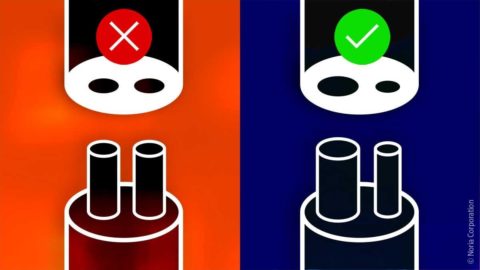
Many things can go wrong in the complex environment of the workplace. Every day, we all face hundreds of risks that can lead to mistakes. In this context, a Japanese consultant named Shingeo Shingo initiated the Poka Yoke tool – a method of preventing errors by reaching the root cause of the problem.
Poka – Yoke consists of 2 Japanese words combined – “yokeru” means “avoid” and “Poka” means unintentional error. So Poka Yoke can be roughly translated as “Avoid accidental errors”. The term Poka Yoke covers the design of all the ponds for them to be put together in a certain direction, through an identification system: lights, signs, bells, whistles… to identify malfunctions when everything not operating properly. Standard color lights then appear to reduce the risk of damage caused by poor connection between devices.
Behind Poka Yoke is the belief that it is unacceptable to have defective products in production, even if just one product. To be a world class competitor, an organization needs to keep this philosophy in mind and practice not creating defective products. From an early age, we have been taught that “Failure is often subjective” and “Prevention is better than cure” and the same holds true in production. Based on that view, many manufacturers have used ZQC (Zero Quality Control) technique to improve their cost effectiveness.
The ZQC philosophy works by combining four basic principles:
Traceability: The handling of defects at source is the key to ensuring that failures are not repeated. It starts with testing the conditions for optimum process efficiency and can eliminate errors with immediate feedback. Predictive maintenance will be performed before defects occur. Here, the focus is on prevention, not detection. This method differs from traditional error handling procedure because it does not address consequences but instead, prevents them from occurring. By incorporating Check and Execution in the ZQC methodology, controlled work is easier in real time. This can include switches that detect missed parts, warning lights and audible signals.
100% quality control: Includes quality control right in the production. This principle assumes that no defective products can be produced after manufacturing, so random sampling is not necessary.
Instant response: ZQC sends the operator a signal and warns that an error has occurred! ZQC testing means errors are detected and responded to immediately. This helps reduce the time it takes to take corrective action later.
Poka-Yoke: Use warning devices to ensure that errors will be prevented
(To be continued)
Productivity and Quality Office